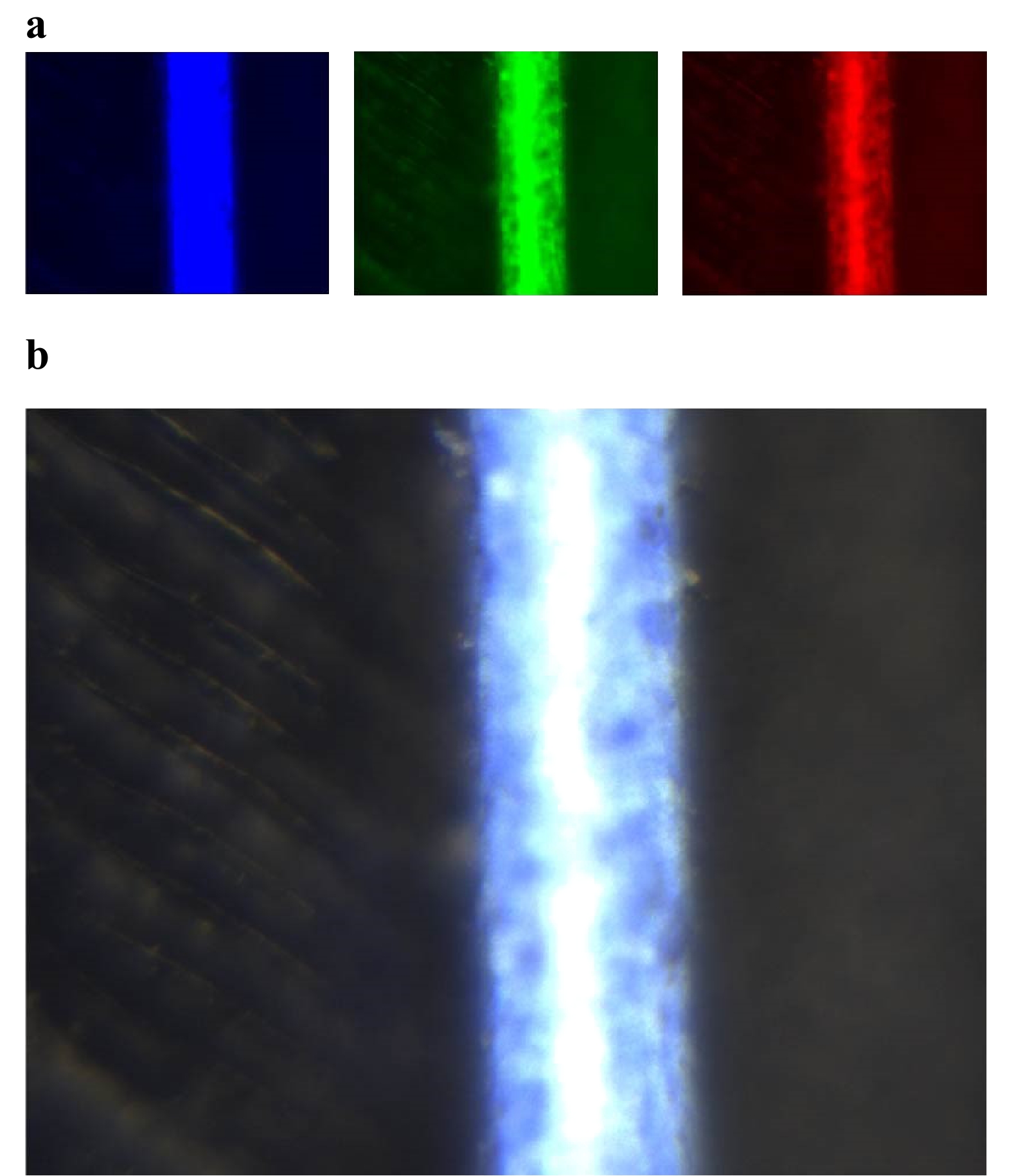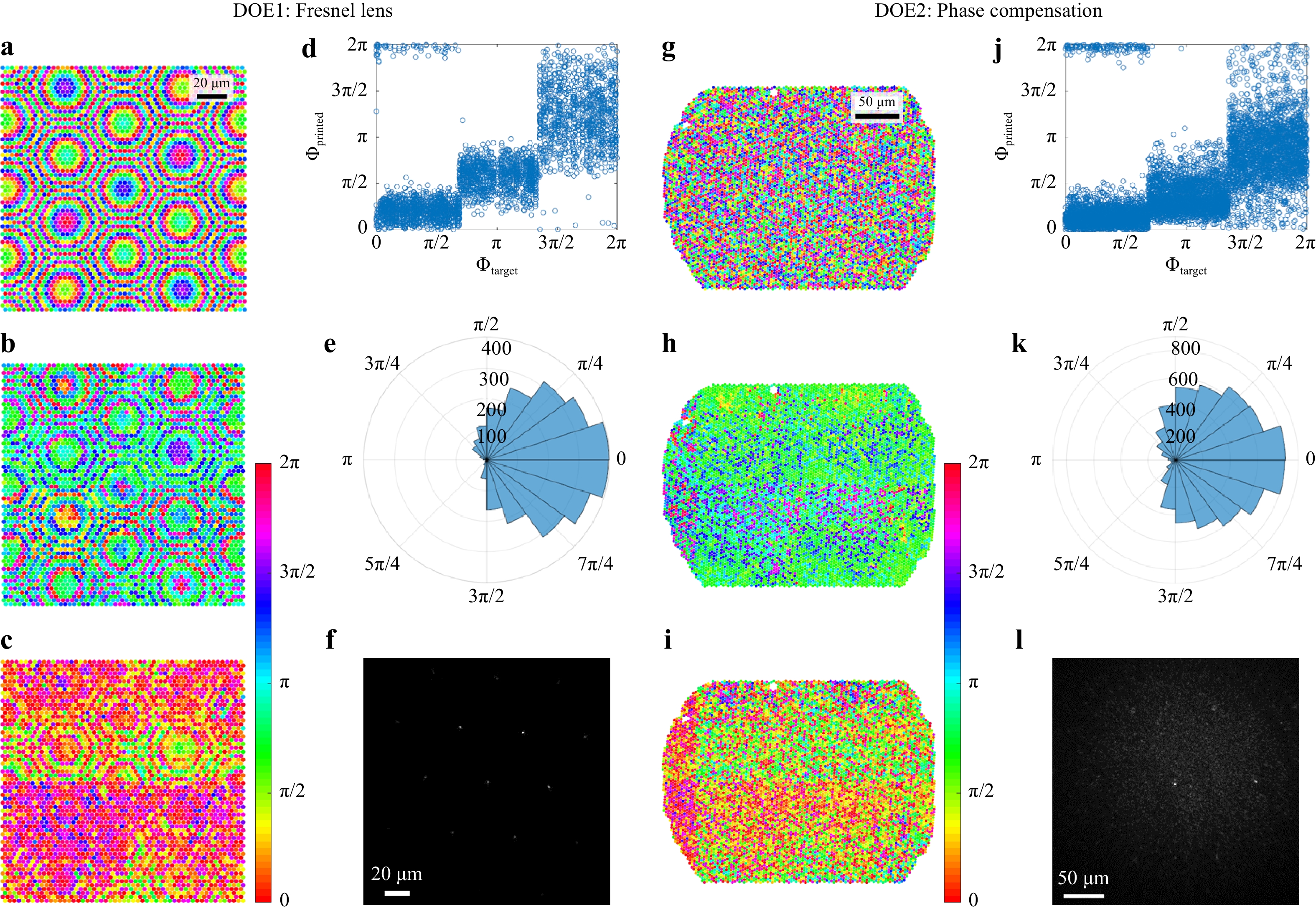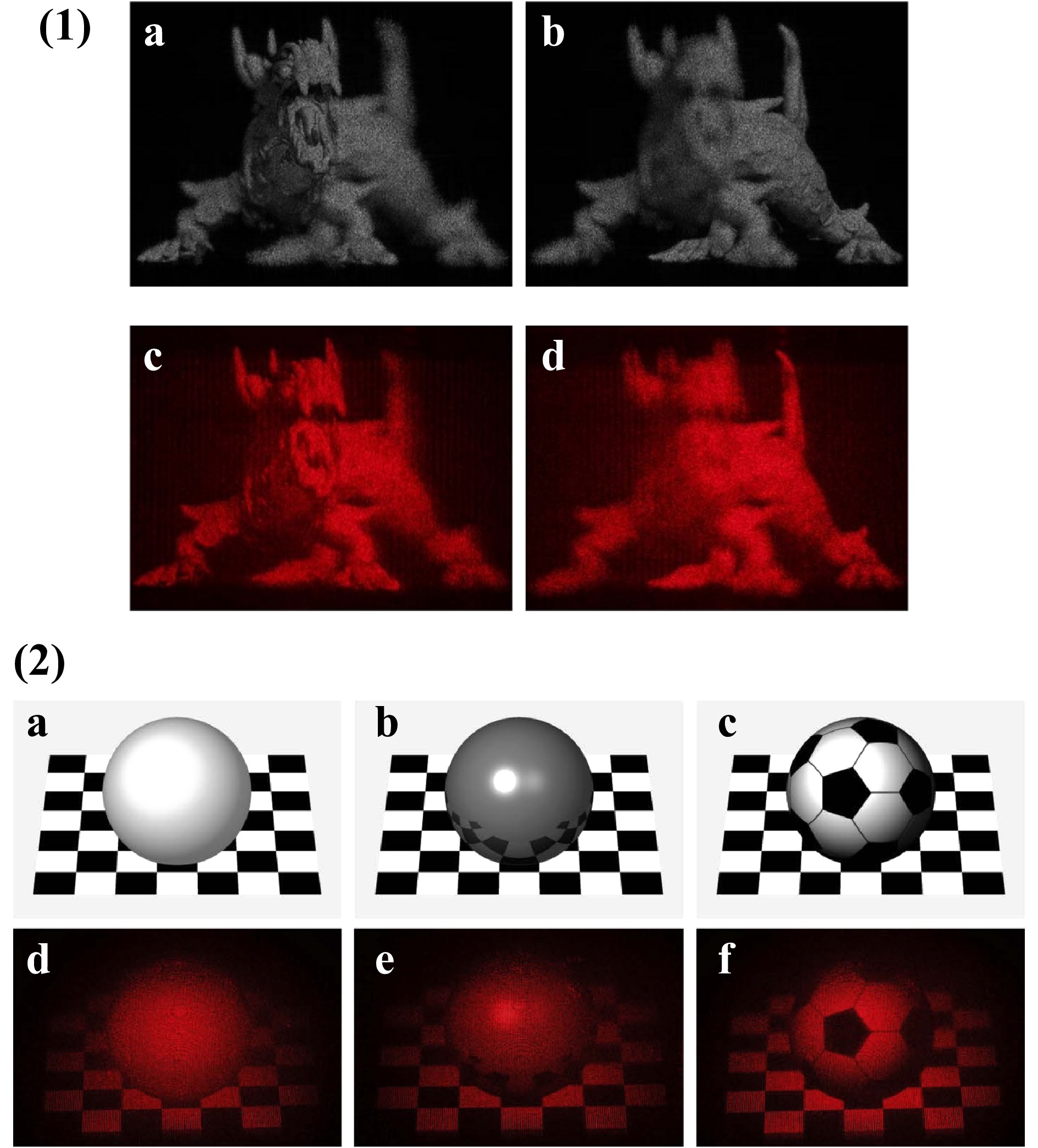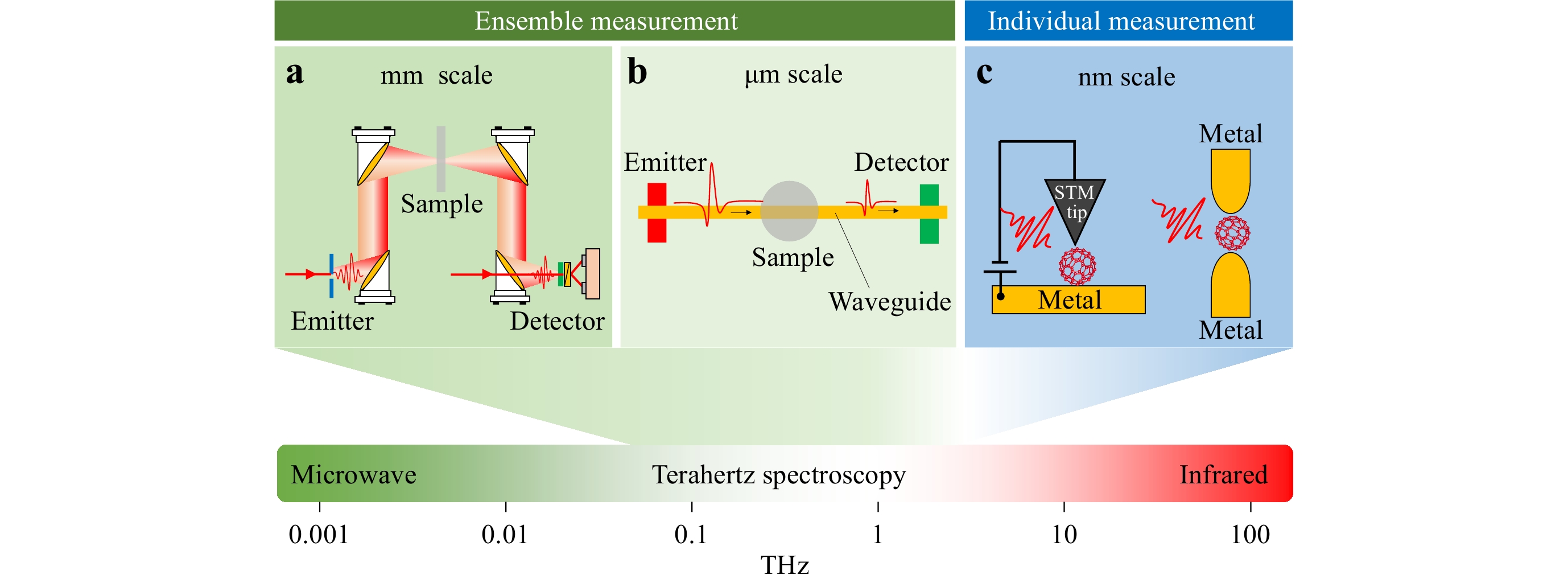2021 Vol. 2, No. 4
Published. 2021, 2(4)
: 373-384
doi: 10.37188/lam.2021.025
Precise control and measurement of the optical fiber diameter are vital for a range of fields, such as ultra-high sensitivity sensing and high-speed optical communication. Nowadays, the measurement of fiber diameter relies on point measurement schemes such as microscopes, which suffer from a tradeoff between the resolution and field of view. Handling the fiber can irreversibly damage the fiber samples, especially when multi-point measurements are required. To overcome these problems, we have explored a novel technique in which the mechanical properties of fibers are reflected by forward stimulated Brillouin scattering (FSBS), from which the diameters can be demodulated via the acoustic dispersion relation. The distributed FSBS spectra with narrow linewidths were recorded via the optimized optomechanical time-domain analysis system using coherent FSBS, thereby achieving a spatial resolution of 1 m over a fiber length of tens of meters. We successfully obtained the diameter distribution of unjacketed test fibers with diameters of 125 μm and 80 μm. The diameter accuracy was verified by high-quality scanning electron microscope images. We achieved a diameter resolution of 3.9 nm, virtually independent of the diameter range. To the best of our knowledge, this is the first demonstration of non-destructive and distributed fiber diameter monitoring with nanometer resolution.
Published. 2021, 2(4)
: 385-394
doi: 10.37188/lam.2021.026
Materials are, in general, either transparent or not. In principle, it is impossible to switch a material from a reflective optical state to a fully transparent one. Transparency has received relatively less research attention compared to other optical properties such as absorption, research on which have successfully produced perfect blacks, that is, highly absorbing materials. The ability to change optical transparency, especially locally and on demand, can enable several applications. Here, we present an absorbing three-layer system whose transparency can be altered by pulsed laser processing to realize different states, ranging from full transparency to mirror, black, and combinations thereof. An initially black surface can be made highly reflective or transparent by changing the laser pulse energy. The corresponding process window, including the influence of the substrate material, was investigated in detail.
Published. 2021, 2(4)
: 395-402
doi: 10.37188/lam.2021.027
The thin-film optical inverse problem has attracted a great deal of attention in science and industry, and is widely applied to optical coatings. However, as the number of layers increases, the time it takes to extract the parameters of thin films drastically increases. Here, we introduce the idea of exploiting the structural similarity of all-optical neural networks and applied it to the optical inverse problem. We propose thin-film neural networks (TFNNs) to efficiently adjust all the parameters of multilayer thin films. To test the performance of TFNNs, we implemented a TFNN algorithm, and a reflectometer at normal incidence was built. Operating on multilayer thin films with 232 layers, it is shown that TFNNs can reduce the time consumed by parameter extraction, which barely increased with the number of layers compared with the conventional method. TFNNs were also used to design multilayer thin films to mimic the optical response of three types of cone cells in the human retina. The light passing through these multilayer thin films was then recorded as a colored photo.
Published. 2021, 2(4)
: 403-414
doi: 10.37188/lam.2021.029
In this paper, we propose a dual-wavelength digital holographic interferometry method based on a compact dual vertical-cavity surface-emitting laser (VCSEL) source. The source simultaneously emits light from two highly stabilized coherent light sources with slightly different wavelengths. A highly stabilized and adjustable current source enables the application of digital holographic dual-wavelength techniques to measure the shape of an object with height steps of a few millimeters. The wavelength drift over 12 h over the entire measurement range, which was evaluated using a wavemeter, was smaller than 1 pm. In addition to the low measurement uncertainty at large height jumps, the dual-wavelength digital holographic system distinguishes itself by its robustness to environmental disturbances such as air turbulence, heat load, and/or mechanical vibrations. This is enabled via a fiber-based almost common-path single-shot digital holographic acquisition of the information of the two different wavelengths using angular multiplexing. The experimental setup and data evaluation are discussed, and we present measurements of non-cooperative objects with specular reflective and/or diffuse reflective surfaces having different colors.
Published. 2021, 2(4)
: 415-424
doi: 10.37188/lam.2021.030
Minimally invasive endoscopes are indispensable in biomedicine. Coherent fiber bundles (CFBs) enable ultrathin lensless endoscopes. However, the propagation of light through a CFB suffers from phase distortions and aberrations that can cause images to be scrambled. The correction of such aberrations has been demonstrated using various techniques for wavefront control, especially using spatial light modulators (SLMs). This study investigates a novel aberration correction without SLM for the creation of an efficient and compact system. The memory effect of CFBs enables a paradigm shift in the use of static diffractive optical elements (DOEs) instead of dynamic modulation with SLM. We introduce DOEs produced by 2-photon polymerization lithography for phase conjugation on a CFB for focusing, raster scanning, and imaging. Furthermore, a DOE with random patterns is used to encode the three-dimensional (3D) object information in a 2D speckle pattern that propagates along the ultra-thin CFB. Neural networks decode the speckles to retrieve the 3D object information using single-shot imaging. Both DOE methods have compact low-cost concepts in common, and both pave the way for minimally invasive 3D endomicroscopy with benefits for optical imaging in biomedicine.
Published. 2021, 2(4)
: 425-433
doi: 10.37188/lam.2021.032
In this study we present a novel and flexibly applicable method to measure absolute and relative vibrations accurately in a field of 148 mm × 110 mm at multiple positions simultaneously. The method is based on imaging in combination with holographic image replication of single light sources onto an image sensor, and requires no calibration for small amplitudes. We experimentally show that oscillation amplitudes of 100 nm and oscillation frequencies up to 1000 Hz can be detected clearly using standard image sensors. The presented experiments include oscillations of variable amplitude and a chirp signal generated with an inertial shaker. All experiments were verified using state-of-the-art vibrometers. In contrast to conventional vibration measurement approaches, the proposed method offers the possibility of measuring relative movements between several light sources simultaneously. We show that classical band-pass filtering can be omitted, and the relative oscillations between several object points can be monitored.
Published. 2021, 2(4)
: 434-445
doi: 10.37188/lam.2021.033
Structural coloration stemming from microstructure-induced light interference has been recognized as a promising surface colorizing technology, based on its potential in a wide array of applications, including high-definition displays, anti-counterfeiting, refractive index sensing, and photonic gas and vapor sensing. Vibration-assisted ultraprecision texturing using diamond tools has emerged as a high-efficiency and cost-effective machining method for colorizing metallic and ductile surfaces by creating near-wavelength microstructures. Although theoretically possible, it is extremely challenging to apply the vibration-assisted texturing technique directly to colorize non-metallic and brittle materials (e.g., silicon and acrylic polymers) with high-quality, crack-free microstructures owing to the intrinsic brittleness of these materials. This study demonstrates the feasibility of direct texturing near-wavelength-scale gratings on brittle surfaces in the ductile regime to fabricate crack-free micro/nanostructures. The effects of tool vibration trajectories on the ductile-to-brittle transition phenomena were investigated to reveal the cutting mechanism of ductile-regime texturing and optimize the processing windows. Structural coloration on silicon and acrylic surfaces was successfully demonstrated by creating programmable and pixelated diffraction gratings with spacing values ranging from 0.75 to 4 μm.
Published. 2021, 2(4)
: 446-459
doi: 10.37188/lam.2021.028
The pioneers of holography, Gabor, Leith, Upatnieks, and Denisyuk, predicted very early that the ultimate 3D display will be based on this technique. This conviction was rooted on the fact that holography is the only approach that can render all optical cues interpreted by the human visual system. Holographic 3D displays have been a dream chased after for many years, facing challenges on all fronts: computation, transmission, and rendering. With numbers such as 6.6 × 1015 flops required for calculations, 3 × 1015 b/s data rates, and 1.6 × 1012 phase pixels, the task has been daunting. This article is reviewing the recent accomplishments made in the field of holographic 3D display. Specifically, the new developments in machine learning and neural network algorithms demonstrating that computer-generated holograms approach real-time processing. A section also discuss the problem of data transmission that can arguably be solved using clever compression algorithms and optical fiber transmission lines. Finally, we introduce the last obstacle to holographic 3D display, which is is the rendering hardware. However, there is no further mystery. With larger and faster spatial light modulators (SLMs), holographic projection systems are constantly improving. The pixel count on liquid crystal on silicon (LCoS) as well as microelectromechanical systems (MEMS) phase displays is increasing by the millions, and new photonic integrated circuit phased arrays are achieving real progress. It is only a matter of time for these systems to leave the laboratory and enter the consumer world. The future of 3D displays is holographic, and it is happening now.
Published. 2021, 2(4)
: 460-472
doi: 10.37188/lam.2021.031
Terahertz (THz) spectroscopy is a powerful tool for characterizing electronic properties and vibronic excitations in various types of solids, liquids, and gases, and it has been extensively used not only for basic science but also for industrial applications. Recently, it has become necessary to understand electronic and vibronic excitations at the nanometer (nm) scale to realize state-of-the-art quantum nanodevices and the synthesis of new molecules for medicine. However, it is challenging to perform THz spectroscopy at the nm scale because the diffraction limit of electromagnetic waves hinders tight focusing of THz radiation at the nm scale. Here, we introduce a novel technique for THz spectroscopy using metal nanogap electrodes. Metal nanogap electrodes integrated with a THz antenna are employed to capture sensing targets, such as a single semiconductor quantum dot (QD) or molecule. Even extremely weak THz absorption can be detected with high sensitivity by measuring the THz-induced photocurrent through the sensing target. Taking advantage of THz-induced photocurrent spectroscopy, the electronic structures in single QDs as well as the vibrational states in single molecules are systematically investigated. The present characterization technology for nm-scale systems provides a key scientific foundation for creating nanodevices with new functions.
Published. 2021, 2(4)
: 473-481
doi: 10.37188/lam.2021.034
Holography has evolved over its 70+ years of history across widespread and diverse communities and locations. This has produced a complex language that is sometimes inconsistent, confusing, and incorrect, resulting in a general public that often appears widely confused and/or ignorant regarding what holograms actually are and are not. Today’ s holographers employ many types of recording media to record all types of waves, such as light, sound, radar, and simulated waves, and for many different applications and purposes. This study examines the language of holography along with its origins, problems, and possible solutions, while recognizing that certain “errors” in the language are so embedded in society that simple and ideal fixes may be beyond reach. This leaves us with certain questions, as follows. First, can the correct language be restored and should we undertake the task, or are we stuck with every three-dimensional image being called a hologram? Is it our duty to better educate the public with a more useful and consistent language, or should we just go with the flow? In this work, beginning with the insights provided by the pioneers of the field, we attempt to set the stage for a more useful holography language and definitions, specialized so as to be understandable and usable by various audiences, including those interested in non-optical holography. Such knowledge can help the general public to take greater interest and enjoyment in holography; this would also be beneficial to those more involved in holography. Accordingly, this article offers advice for achieving this result.














 Email
Email RSS
RSS